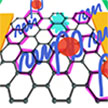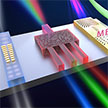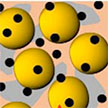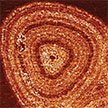Showing Spotlights 337 - 344 of 2785 in category All (newest first):
 An estimated 6.8 billion face masks are used around the world each day, which ultimately are incinerated, sent to landfills or simply dumped in the environment, providing a glimpse of a forthcoming severe global environmental crisis. Many of these synthetic face masks are non-biodegradable in nature. To address this issue, researchers have developed a 3-layered biodegradable, antibacterial, breathable, herbal-extract based, and needleless electrospun face mask.
An estimated 6.8 billion face masks are used around the world each day, which ultimately are incinerated, sent to landfills or simply dumped in the environment, providing a glimpse of a forthcoming severe global environmental crisis. Many of these synthetic face masks are non-biodegradable in nature. To address this issue, researchers have developed a 3-layered biodegradable, antibacterial, breathable, herbal-extract based, and needleless electrospun face mask.
Jan 6th, 2022
 The use of graphene-based field-effect transistors is one of the most powerful biosensing units for the detection of numerous biological and biochemical analytes. In new work, researchers propose a microscopic model of mycotoxin detection via graphene-based aptasensors enabling improvement of biosensor sensitivity, which is based on the investigation of aptamer interaction mechanism with graphene channel during binding of targeted molecules. The limit of detection is estimated at only 1 pM and time response in just 10 seconds, making the developed platform a high-performance device.
The use of graphene-based field-effect transistors is one of the most powerful biosensing units for the detection of numerous biological and biochemical analytes. In new work, researchers propose a microscopic model of mycotoxin detection via graphene-based aptasensors enabling improvement of biosensor sensitivity, which is based on the investigation of aptamer interaction mechanism with graphene channel during binding of targeted molecules. The limit of detection is estimated at only 1 pM and time response in just 10 seconds, making the developed platform a high-performance device.
Dec 22nd, 2021
 The concepts of metamaterials and metasurfaces have spawned massive novel applications in free-space optics. However, recent research also indicates that they possess prominent potential for tailoring the electromagnetic modes in optical waveguides. In a new review, researchers discuss recent advances of applying various meta-structures with diverse waveguide platforms to enhance the performance and expand functionalities for integrated photonic devices.
The concepts of metamaterials and metasurfaces have spawned massive novel applications in free-space optics. However, recent research also indicates that they possess prominent potential for tailoring the electromagnetic modes in optical waveguides. In a new review, researchers discuss recent advances of applying various meta-structures with diverse waveguide platforms to enhance the performance and expand functionalities for integrated photonic devices.
Dec 2nd, 2021
 EV manufacturing requires more energy and produces more emissions than manufacturing a conventional car because of batteries. There are many unanswered questions about the life-cycle greenhouse gas implications of electric vehicles, especially related to early estimates of battery production emissions. A new review addresses these questions and the advances in new battery chemistries, plus new insights into CO2 emissions from battery manufacturing.
EV manufacturing requires more energy and produces more emissions than manufacturing a conventional car because of batteries. There are many unanswered questions about the life-cycle greenhouse gas implications of electric vehicles, especially related to early estimates of battery production emissions. A new review addresses these questions and the advances in new battery chemistries, plus new insights into CO2 emissions from battery manufacturing.
Dec 1st, 2021
 The development of smart cities is linked to the development of new materials and devices, the use of sensor networks, the handling of huge amounts of data, the development of communication networks between objects, decision-making, and a range of other smart technologies. Many of these areas benefit from nanotechnology enabled materials and devices such as sensors, photovoltaics, efficient lighting systems or communication networks.
The development of smart cities is linked to the development of new materials and devices, the use of sensor networks, the handling of huge amounts of data, the development of communication networks between objects, decision-making, and a range of other smart technologies. Many of these areas benefit from nanotechnology enabled materials and devices such as sensors, photovoltaics, efficient lighting systems or communication networks.
Nov 30th, 2021
 Many 2D materials with atomic-scale thicknesses suffer from oxidation and degradation effects under ambient conditions, which is one of the biggest obstacles in their practical applications. A 75-month study used atomic force microscopy to investigate the long-term evolution of oxidative defects on transition metal dichalcogenides (TMDs). Intriguingly, the researchers found that long-term storage in ambient conditions led to evolution of a distinct ring-like pattern resembling the tree-lines arising from seasonal changes.
Many 2D materials with atomic-scale thicknesses suffer from oxidation and degradation effects under ambient conditions, which is one of the biggest obstacles in their practical applications. A 75-month study used atomic force microscopy to investigate the long-term evolution of oxidative defects on transition metal dichalcogenides (TMDs). Intriguingly, the researchers found that long-term storage in ambient conditions led to evolution of a distinct ring-like pattern resembling the tree-lines arising from seasonal changes.
Nov 22nd, 2021
 The diversity, complexity, and heterogeneity of malignant tumor seriously undermine the efficiency of mono-modal treatment. Recently, multi-modal therapeutics with enhanced antitumor efficiencies have attracted increasing attention. However, designing a nanotherapeutic platform with uniform morphology in nanoscale that integrates with efficient chem-/sono-/photo-trimodal tumor therapies is still a great challenge. Reseaerchers now designed a nanotherapeutic platform with uniform morphology in nanoscale that integrates with efficient chem-/sono-/photo-trimodal tumor therapies.
The diversity, complexity, and heterogeneity of malignant tumor seriously undermine the efficiency of mono-modal treatment. Recently, multi-modal therapeutics with enhanced antitumor efficiencies have attracted increasing attention. However, designing a nanotherapeutic platform with uniform morphology in nanoscale that integrates with efficient chem-/sono-/photo-trimodal tumor therapies is still a great challenge. Reseaerchers now designed a nanotherapeutic platform with uniform morphology in nanoscale that integrates with efficient chem-/sono-/photo-trimodal tumor therapies.
Oct 29th, 2021
 Scanning probe lithography techniques rely on the use of cantilevers to pattern sub-100 nm structures generated by the mechanical contact between a cantilever tip and a surface. SPL, with its high resolution, is a popular method for prototyping nanoscale structures. Overcoming the current limitations of SPL - the lack of high-resolution, high-speed throughput at low cost - researchers developed a new technique they termed nanocalligraphy scanning probe lithography.
Scanning probe lithography techniques rely on the use of cantilevers to pattern sub-100 nm structures generated by the mechanical contact between a cantilever tip and a surface. SPL, with its high resolution, is a popular method for prototyping nanoscale structures. Overcoming the current limitations of SPL - the lack of high-resolution, high-speed throughput at low cost - researchers developed a new technique they termed nanocalligraphy scanning probe lithography.
Oct 28th, 2021
 An estimated 6.8 billion face masks are used around the world each day, which ultimately are incinerated, sent to landfills or simply dumped in the environment, providing a glimpse of a forthcoming severe global environmental crisis. Many of these synthetic face masks are non-biodegradable in nature. To address this issue, researchers have developed a 3-layered biodegradable, antibacterial, breathable, herbal-extract based, and needleless electrospun face mask.
An estimated 6.8 billion face masks are used around the world each day, which ultimately are incinerated, sent to landfills or simply dumped in the environment, providing a glimpse of a forthcoming severe global environmental crisis. Many of these synthetic face masks are non-biodegradable in nature. To address this issue, researchers have developed a 3-layered biodegradable, antibacterial, breathable, herbal-extract based, and needleless electrospun face mask. 
 Subscribe to our Nanotechnology Spotlight feed
Subscribe to our Nanotechnology Spotlight feed





